Meet the ten artists who are taking part in the 2013 Connect10 competition, find out about their creative journeys and what they’d like to create. Could you see any of these ideas working in your museum, gallery, library or heritage site?
The Turner Prize-nominated Chapman Brothers studied at the Royal College of Art, and worked as assistants to British artists Gilbert and George. Their iconoclastic sculptures, paintings, prints and large-scale installations draw on confrontational imagery to question standards of politics, political correctness and obscenity in witty and frequently shocking ways: in the past they have reworked Goya etchings and watercolours by Hitler.
The Chapman Brothers’ Connect10 idea:
Off the top of our heads we’re thinking of staging either: a live human Autopsy-Turvy involving radioactive isotopes and a fun game of ‘Hunt the Spleen’; ‘Pin the Tail on the Donkey’ at a zoo; a game of Night Vision Paintball in a cathedral; a Wall of Death Motorcycle Gauntlet in a museum; or something involving industrial storage heaters at a waxwork museum. But if any participating institutions have a better idea we’re completely up for a discussion.
Central to Mat Collishaw’s work are the themes of illusion and desire, which he uses to draw us into an arena where everyday conventions are broken down and questioned. The photographer and video innovator is known for his hard-hitting images of beauty and cruelty, and has created adult zoetropes, photographed himself trying to catch fairies, and used phosphorescent paint to convey the brief lives of Victorian street children.
Mat Collishaw’s Connect10 idea:
I’d like visitors to help me prepare and make some of my work, in order to get a deeper understanding of my practice and the motives behind what I make and how I make it. These technical practices might include the flattening of the butterflies for my insecticide works or helping me create some of my spinning zoetropes and will be accompanied by informal discussion and guidance from me and my studio assistants.
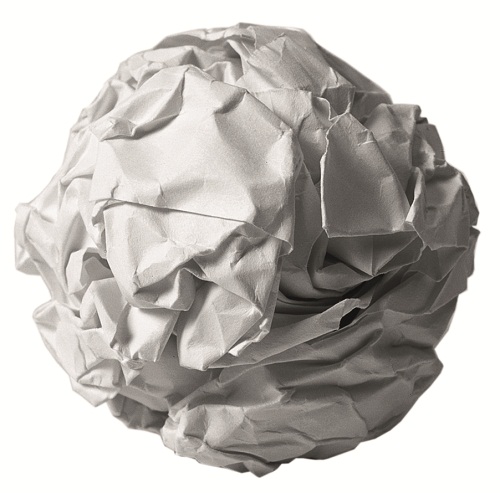
Work No. 88: A sheet of paper crumpled into a ball (1996) (c) Martin Creed, image courtesy the artist and Hauser & Wirth
2001 Turner Prize winner Martin Creed has exhibited his solo shows, performances and installations around the world. His recent works involve various art forms including music, dance, writing, sculpture and painting: pieces ranging from compositions for symphony orchestra and music for elevators to architectural commissions, public monuments and dance and performances which combine classical ballet with talk, music, film and animation.
Cullinan Richards is a London-based artistic collaboration between Charlotte Cullinan and Jeanine Richards. Since 1997 they have been producing work ranging from painting to performance to film, fusing personal histories with fiction so as to confront shared social and cultural issues. In 2006, they established Savage School Window Gallery, a gallery exhibiting works from a window in their studio on Vyner Street, London. Together they were on the panel of selectors for the Bloomberg New Contemporaries 2012.
Cullinan + Richards’ Connect10 idea:
We’d love to create a film set for a fictional Tarantino re-make of Russ Meyer’s cult film Faster, Pussycat! Kill! Kill! in which the visitors are the extras. Viewers will be immersed in something which looks like a film set, smells like a film set and feels like a film set – this detailed reconstruction will even feature a catering truck serving sweet tea and bad sandwiches served by gallery staff playing the part of the film crew. There will be auditions taking place in various roped off sections of the space, one of which will be a boxing ring where extras will be sparring with casting agents & directors. There will also be a backdrop of projections taking place throughout the space. There could be indoors and outdoors elements to this experience, depending on the venue.
Shortlisted for the Jerwood Sculpture Prize in 2009, Susan Forsyth tweaks the canon, using sculpture, text, participatory performance and short films to re-play the historically significant and the everyday ephemeral. The skill and craft of sculpture-making is important in her work: she gilds; fabricates industrial sheets; casts in plaster, bronze and iron; organises scratch choirs and ping-pong games.
Susan Forsyth’s Connect10 idea:
I like the idea of creating a large scale candle-lit Zusammen Choir Procession, performed entirely by Museums at Night visitors, the more the better, accompanied by a core of professional musicians. Zusammen means ‘together’ in German, so appropriately the songs being sung will be written by Susan in collaboration with the winning venue to tell the story of its unique cultural history through a collaborative public performance. There will be no rehearsals and critically, no singing skill is required. The procession can involve any route through a village, town or city but will end at the winning venue for a gloriously out-of-tune finale.
rAndom create artworks and installations that explore behaviour and interaction, often using light and movement. Founded in 2005 by Stuart Wood, Florian Ortkrass and Hannes Koch, the studio utilises raw fragments of artificial intelligence to encourage relationships between the converging worlds of animate and inanimate. The studio is based in a converted warehouse in Chelsea, London and today includes a growing team of diverse talent.
rAndom International’s Connect10 idea:
Given that The Rain Room which we installed at The Barbican took 4 years to develop and execute we’re thinking of something marginally smaller in scale but which affects viewers in a similarly immediate way. For Museums at Night, we’d love to stage a one-off performative intervention that engages the wider public with unforeseen aspects of their own expectations in a highly experimental fashion. We’d like to focus this experience around the elements of nature, in particular water and more specifically the sea and the seaside, and actively invite proposals/ideas. The most exciting aspect of Museums at Night for us is seeing what ideas the venues themselves come up with so we don’t want to provide too much information, rather general ideas!
Gavin Turk studied at the Royal College of Art and rose to prominence as one of the infamous Young British Artists. His sculptures and installations critique the construction of artistic myths of authorship, creativity and genius, often using his own image and signature to address issues surrounding authorship, authenticity and identity. Since 2008, Turk and his partner Deborah Curtis have run a project-based group of artists called The House of Fairy Tales, designed to further educational community projects to support and advocate art.
Gavin Turk’s Connect10 idea:
I’m thinking of creating a giant Magic Flying Carpet experience for visitors, accompanied by an evening of fantastical story-telling and yarn spinning, charting a mystical journey through time and history. This journey could reflect the history and context of any venue/location so could be entirely site specific. Alternatively I like the idea of making a large scale light and sound installation – the more immersive the visitor experience the better – mobilising viewers to participate in a live performance of some kind using hundreds of neon glow sticks.
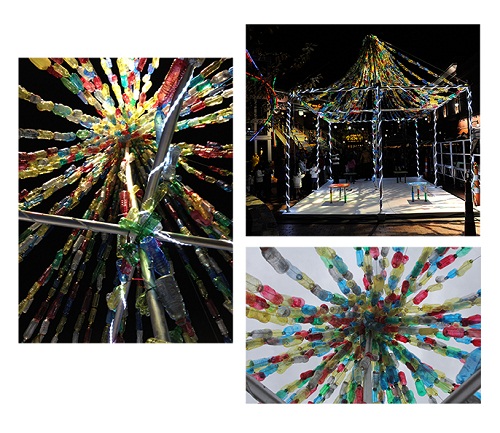
Holiday Destination (c) Julia Vogl – an artwork that is also a visualisation of data collected from the local community, with colour-coded bottles showing where people intend to spend their holidays
Winner of the Aesthetical Art Prize and the Catlin Art Prize, the American and British artist has shown as part of the Saatchi and Channel 4 New Sensations exhibition, and was commissioned to make work for The People’s Supermarket. Vogl’s work is committed to reflecting the community site it is placed in, with a record of scaling buildings including the 40 front windows of Mudd Library in Ohio; HOME, a self-initiated Cultural Olympiad project for Peckham Community in London; and most recently HOLIDAY DESTINATION, for Silver Spring Maryland Shopping mall plaza.
Julia Vogl’s Connect10 idea:
I could create a huge interactive multi-coloured map of a community using 10,000+ vessels (glass, ceramic, plastic, metal, balloon) that can contain water. The vessels could be gathered/donated by the public in the months leading up to the event, at which point I will invite visitors to colour the water with local pigments, natural colour resources or food colouring. Ideally this map could be seen from alternate perspectives in the space. The colour-coding and demographic content will be based on a subject of key interest/relevance to the venue, site and/or location. For this particular idea to work we’ll require a large forum to lay out the work (not necessarily horizontally) and the venue must be able to help me collect thousands of recycled or locally sourced vessels. The details of how we make this interactive installation site-specific are completely up for discussion.
Richard Wentworth has played a leading role in New British Sculpture since the end of the 70s. His work has altered the traditional definition of sculpture as well as photography, subversively transforming and manipulating industrial and/or found objects into works of art. In his photography, as in the ongoing series Making Do and Getting By, Wentworth documents the everyday, paying attention to objects, occasional and involuntary geometries as well as uncanny situations that often go unnoticed.
Richard Wentworth’s Connect10 idea:
I’d like to explore how things are assembled, not just physically, with objects and collections, but socially, with people. As an exercise of mass observation, I’ve always wanted to kidnap an entire tube, train, bus, or tram at a random moment to find out who’s on it, where they’re going and why. Alternatively, feeding my deep interest in the history of social protest I’d like to somehow stage a silent riot which would require the participation of several hundred visitors in a large public space. Whatever the outcome of this collaboration, it will relate specifically to the compass of what the museum or gallery does.
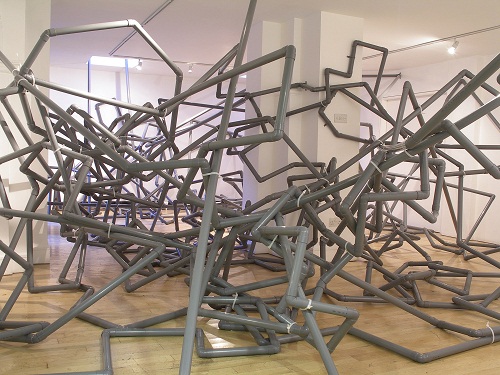
Making the Connection at the Tabernacle (c) Julian Wild – a touring communal sculpture project in which members of the public can add to a large scale sculpture constructed from plastic plumbers pipe
Julian Wild has exhibited in a range of spaces including the Victoria & Albert Museum, and was shortlisted for the Jerwood Sculpture Prize in 2005. The linear structures that he makes either explore the boundaries of a pre-determined shape or the space that they exist in. His sculptures are often based on the history of the site and reference functional processes and systems. Wild is interested in construction and manufacturing ranging from the functional (e.g. stainless steel handrails) to decorative processes such as japanning. Lately he has created a series of sculptures that are three-dimensional doodles.
Julian Wild’s Connect10 idea:
My favourite idea so far is to create a unique glow-in-the-dark version of ‘Making the Connection’, using white plastic tubing and luminous paint. Members of the public will actually be responsible for assembling this piece of sculpture and at the end of the night the lights in whichever museum or space we’re in will be turned off to reveal a glowing masterpiece. The possibilities regarding the shape and scale of this event depend entirely on the spaces in a venue and if a venue has interesting suggestions as to how this can be applied, I’m very keen to discuss ideas.
Download this information as a 4 page PDF to share
The Connect10 competition is supported using public funding by the National Lottery through Arts Council England.

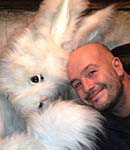
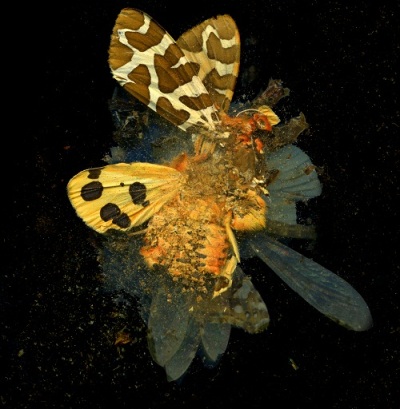
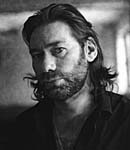
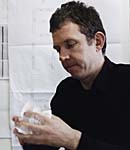
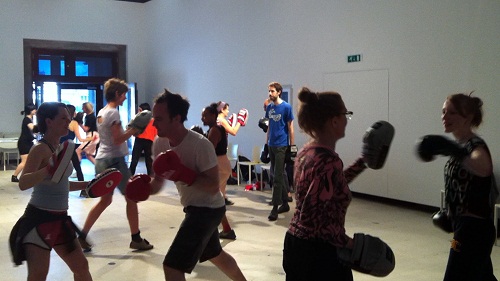

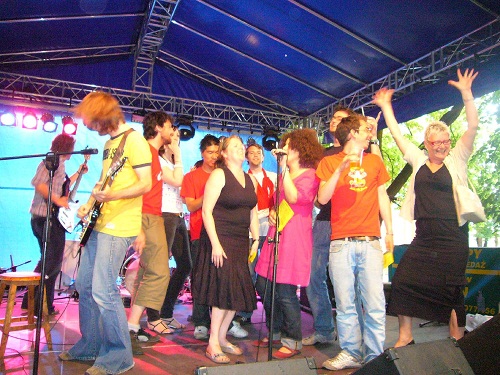
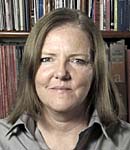
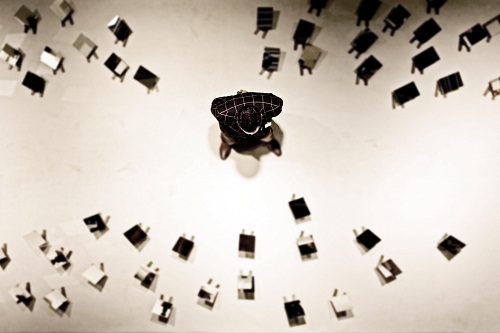
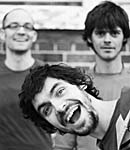


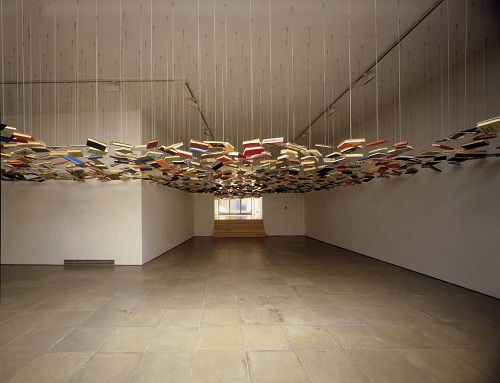

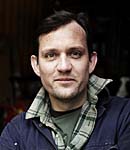

Pingback: The Connect10 competition returns: win an artist and funding towards your Museums at Night event | Museums at Night Blog
Pingback: Curious about the Connect10 competition? We’re here to help! | Museums at Night Blog
We are a small museum in Bath with very limited space and feel we are excluded from all of these HUGE ideas. Had you thought of also including artists who are inventive and wonderful but who can work wonders in small spaces please!?
Hi Susanna, thanks for commenting!
The artists’ ideas are very approximate and are intended to give you some background about the sort of things that inspire them and they way they like to work. When we issue the list of Connect10 artists available for Museums at Night 2014, which we will do soon, we encourage venues of all sizes to think whether their might be a connection between one of the artists and your venue, collections or location.
Events don’t have to take place inside your building (Susan Forsyth’s Zusammen choir procession around the streets of Rochdale was a great example of community outreach) and you can also work together with another local venue.